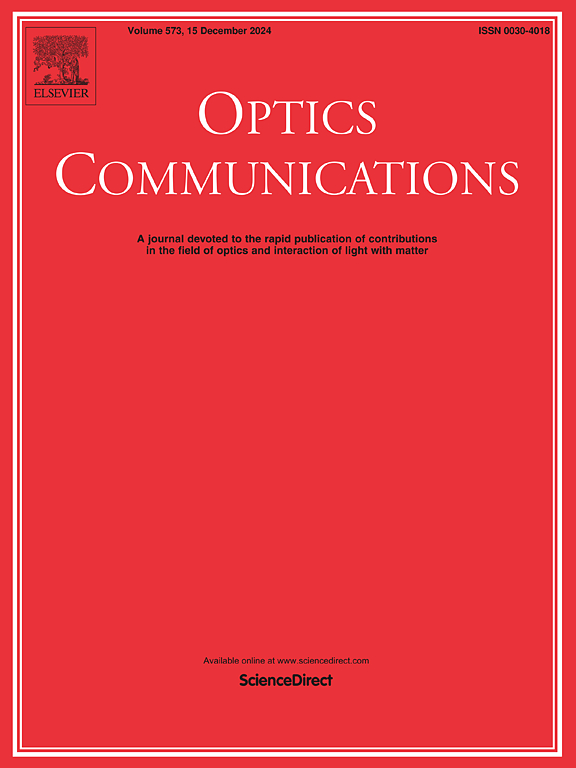一种不完美相机曝光条件下稳健的变换域LED-ID识别方法
IF 2.5
3区 物理与天体物理
Q2 OPTICS
引用次数: 0
摘要
利用发光二极管(LED)和互补金属氧化物半导体(CMOS)相机的光学相机通信(OCC)越来越多地用于室内定位。LED-ID的识别是这些方法中最关键的步骤之一。当LED频率超过曝光频率时,CMOS相机的曝光效果会降低条纹对比度。传统的二值解调方法在该频段容易受到干扰,导致识别失败。本文提出了一种结合离散余弦变换(DCT)和高通滤波(HPF)的稳健led id识别方法。该方法利用变换域的相位共振和相消将高频信息从低频干扰中分离出来,成功地将识别频带提高了至少2.5倍。同时,分析了相机采样参数和曝光对LED-ID识别的影响,为可见光定位系统的硬件选择提供指导。实验结果验证了该方法在低对比度情况下的识别性能,证明了该方法的实用性和鲁棒性。本文章由计算机程序翻译,如有差异,请以英文原文为准。
A robust transform-domain LED-ID recognition method under imperfect camera exposure conditions
Optical camera communication(OCC), leveraging light emitting diode(LED) and complementary metal oxide semiconductor(CMOS) cameras, is increasingly being used for indoor positioning. Recognition of LED-ID is one of the most critical steps in such methods. The exposure effect of CMOS cameras will decrease the stripe contrast when the LED frequency exceeds the exposure frequency. The traditional binary demodulation method is easily interfered with in this frequency band, which may lead to recognition failure. This article proposes a robust LED-ID recognition method that combines discrete cosine transform (DCT) and high pass filtering (HPF). The method utilizes phase resonance and cancellation in the transform domain to separate high-frequency information from low-frequency interference, successfully increasing the recognition frequency band by at least 2.5 times. At the same time, the camera sampling parameters and exposure effects on LED-ID recognition are analyzed to guide hardware selection for visible light positioning systems. The experimental results validated the recognition performance of the method in low-contrast situations and demonstrated its practicality and robustness.
求助全文
通过发布文献求助,成功后即可免费获取论文全文。
去求助
来源期刊

Optics Communications
物理-光学
CiteScore
5.10
自引率
8.30%
发文量
681
审稿时长
38 days
期刊介绍:
Optics Communications invites original and timely contributions containing new results in various fields of optics and photonics. The journal considers theoretical and experimental research in areas ranging from the fundamental properties of light to technological applications. Topics covered include classical and quantum optics, optical physics and light-matter interactions, lasers, imaging, guided-wave optics and optical information processing. Manuscripts should offer clear evidence of novelty and significance. Papers concentrating on mathematical and computational issues, with limited connection to optics, are not suitable for publication in the Journal. Similarly, small technical advances, or papers concerned only with engineering applications or issues of materials science fall outside the journal scope.
 求助内容:
求助内容: 应助结果提醒方式:
应助结果提醒方式:


